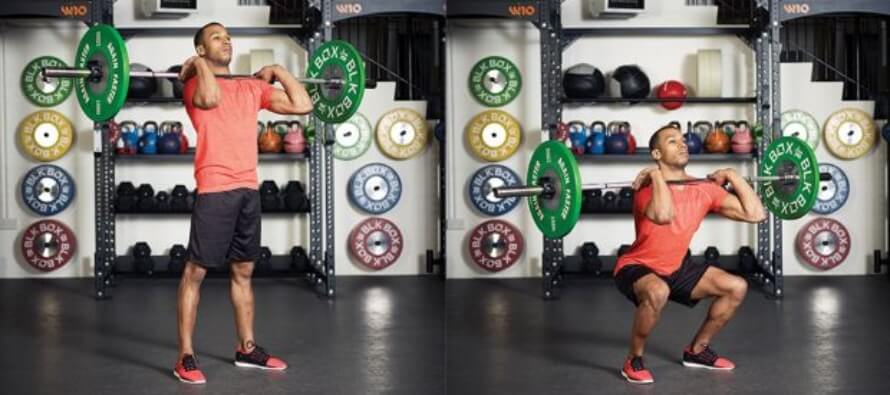

They should have their full weight on your legs. To gain leverage, you’ll have to push up into your partner’s hands with your legs. Don’t try to use your hamstrings to come back up unless the exercise is too easy. Relax your legs and land on the ground with your hands, then push yourself back up like you’re doing a pushup. Move slowly and under control until your hamstrings can’t hold you up any longer. Lean forward, maintaining a straight line from your knees to your head.

The move: Kneeling on a pad, have your partner grab your ankles to hold your feet down. Lunges are an all-rounder working almost all lower-body muscles glutes, quads, hamstrings, and calf muscles. If you’re an athlete trying to prevent hamstring injuries, try this exercise. Aim for 8-10 reps on each leg for 3-4 sets to build muscle and strength. This exercise activates the hamstrings as much as sprinting, according to a 2017 study published in the International Journal of Sports Physical Therapy. It may seem simple, but this is one of the most challenging hamstring exercises you can do. Working your hamstrings is much more fun with a friend, so grab a gym buddy for this exercise. Here, six exercises to work the back of your thigh for more strength and injury prevention: Strengthening them helps prevent injuries and rounds out your physique, even if they’re not as exciting to train as other muscles. Hamstring injuries are one of the most common sports injuries, according to a study in the Journal of Sport and Health Science. However, you should push past the discomfort and take care of these frequently forgotten muscles. Sometimes, they feel tight or even cramp up during training. If you decide you want to train your hamstrings, you’ll find they’re not a very easy muscle to work. Your hamstrings are probably weaker than other leg muscles if you’ve neglected them, so training them might be uncomfortable. Two research studies have shown how the Smith machine can help build bigger, stronger legs. So yes, you should consider Smith machine squats. It’s hard to see them in a mirror, so you can’t tell if they’re prominent or underdeveloped. It’s hard to beat the standard free-weight barbell squatfor building leg size and strength, but it’s also true that variety is key for long-term growth. Three of the them cross two joints: the hip and knee. You have four hamstrings muscles on each leg. “Out of sight, out of mind” seems to be the most common attitude toward hamstring training. Keeping them strong helps prevent injuries. However, you use them when you run, walk, bike, squat and in most other movements that involve the lower body. They’re not “beach muscles” and the exercises that target them aren’t very popular, so there’s a chance you don’t think much about them. The greater gender difference in upper body strength can probably be attributed to the fact that women tend to have a lower proportion of their lean tissue distributed in the upper body.The hamstrings - the muscles that run down the back of your thigh - don’t get much attention or glory. Data suggest that the greater strength of the men was due primarily to larger fibers. No significant gender difference was found in the strength to CSA ratio for elbow flexion or knee extension, in biceps fiber number (180,620 in men vs 156,872 in women), muscle area to fiber area ratio in the vastus lateralis 451,468 vs 465,007) or any motor unit characteristics. The men had significantly larger type I fiber areas (4597 vs 3483 microns2) and mean fiber areas (6632 vs 3963 microns2) than the women in biceps brachii and significantly larger type II fiber areas (7700 vs 4040 microns2) and mean fiber areas (7070 vs 4290 microns2) in vastus lateralis.

The women had 45, 41, 30 and 25% smaller muscle CSAs for the biceps brachii, total elbow flexors, vastus lateralis and total knee extensors respectively. A significant correlation was found between strength and muscle cross-sectional area (CSA P < or = 0.05). The men were also stronger relative to lean body mass. The women were approximately 52% and 66% as strong as the men in the upper and lower body respectively. Fiber areas and type were determined from needle biopsies and muscle areas by computerized tomographical scanning. Measurements included motor unit number, size and activation and voluntary strength of the elbow flexors and knee extensors. Strength and muscle characteristics were examined in biceps brachii and vastus lateralis of eight men and eight women.


 0 kommentar(er)
0 kommentar(er)
